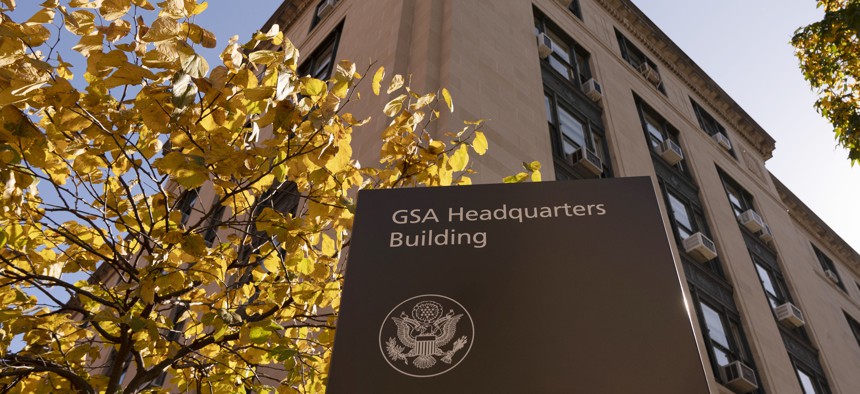Better Collaboration Needed Between 18F, USDS To Reduce Overlap, GAO Says

GSA Headquarters, where digital service team 18F is housed. (AP Photo/Jacquelyn Martin)
A GAO audit suggests the two offices need to improve communication of IT guidance to reduce overlap and contradiction for federal agencies.
In order to better assist government agencies implementing modernization technologies across their business operations, two federal tech offices, the Office of Management and Budget's U.S. Digital Service and the General Services Administration's 18F program, need to better coordinate their information technology guidelines to prevent conflicting recommendations.
Outlined in a report conducted by the Government Accountability Office, both federal technology consulting services showcased instances of duplicated IT protocol, especially surrounding processes agencies use to reduce contract duplication.
Enhanced collaboration would help streamline federal agencies’ acquisition of new IT and enterprise technologies and reduce wasteful spending.
“Although USDS and 18F coordinated on projects and recruiting efforts, they did not always do so to avoid developing duplicative IT guidance,” the report reads. “Specifically, neither entity had an established, documented coordination approach, even though they had issued guidance on the same IT acquisition and development topics with similar content.”
The GSA’s 18F program began in 2016 and was designed to help government agencies transition from legacy systems to more advanced digital technologies.
In comparison, the U.S. Digital Service supports government offices in their modernization efforts, with an emphasis on user experience and customer service.
Lawmakers have previously probed the need for two federally-funded programs that seemingly perform the same tasks since 18F’s inception, calling its purpose into question during a 2016 House hearing.
Previous GAO Director of IT Management Dave Powner testified then that 18F was designed to help agencies procure agile development contractors quickly for smaller scale projects, while the USDS was intended for supporting larger projects.
In its most recent review, the GAO outlined that both services work in three common areas: federal IT acquisition, recruiting IT experts to government projects, and issuing IT guidance.
Due to this overlap, both offices tend to work on similar projects and deploy guidance along the same topics. The GAO review noted that leadership from both programs are aware of these commonalities, and consistently collaborate on federal IT projects and recruiting specialists.
When it comes to IT contractor acquisitions and best practice guidance, however, the agencies tend to issue different versions of guidelines for similar IT topics.
One example the GAO found was when both 18F and the USDS developed their own guides on acquiring digital services using agile project management systems. Overlaps like this introduce the possibility of conflicting advice.
“By not coordinating on the planning and development of guidance, USDS and 18F risk overlapping or duplicating their efforts or presenting conflicting information in their guidance,” the GAO said.
Recommendations varied for both offices.
The GAO recommended that the director of the OMB work alongside both the administrator of the USDS and the executive director of 18F to establish an improved approach to coordinate their IT guidance given to government offices.
GAO officials also suggest that the administrators of the GSA also have a hand in organizing both departments’ IT guidance.
Both overseeing agencies wrote to the GAO after viewing a draft of the report. The OMB commented that leadership within both the USDS and GSA have started meeting to develop better procedures that coordinate future IT guidance. The GSA also commented that it formally agreed with the GAO’s recommendations and planned to coordinate operations with the USDS.






